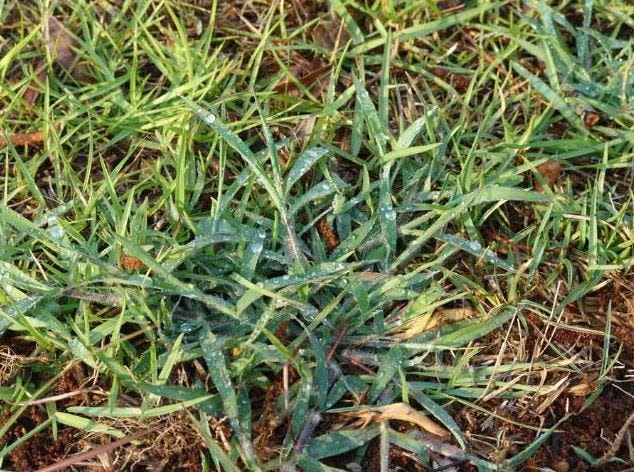Timing is everything when applying pre-emergent to your lawn
The weather just seems to get more and more unpredictable. From the extreme winter storm a year ago to the warm December we just had, unusual weather can make gardening even more challenging than it already is in West Texas. But one of the common late-winter lawn care tasks, application of pre-emergent herbicide, is based on a measurable factor – soil temperature. If you would like to prevent spring weeds in the lawn, purchase pre-emergent and get it ready to go for when conditions are right – usually around mid-February to early March.
Pre-emergent is recommended for lawns twice a year. In the late winter, apply when soil temperatures are about 55 degrees for several days in a row. In the fall, wait until soil temperature decreases to about 70 degrees. Soil temperature can be measured with a soil thermometer or even a simple kitchen meat thermometer. There are also soil temperature maps available online that show the current temperature as well as a 5-day average.
More: The 16 best places to buy patio and outdoor furniture online
Visit https://tomgreen.agrilife.org/horticulture/ and click on “Pre-Emergence Herbicides for the Home Lawn” to see a publication with more details and a list of products. Some are better for grassy weeds but there are options for broadleaf as well. Benefin (‘Balan’), dithiopyr (“crabgrass control”), isoxaben (‘Gallery’) and pendimethalin (‘Halts’ or ‘Pre-M’) are some that are generally widely available in local horticulture supply stores and garden centers, and there are many other brand names and products to choose from as well.

Pre-emergent herbicide kills seedlings as they emerge so timing is very important – it must be applied before the weeds come up. And it’s only effective against annual weeds, it will not kill perennial weeds that have an established root system. When used appropriately, pre-emergent can be very effective against otherwise difficult to control weeds such as crabgrass, annual bluegrass and rescuegrass. But remember that the first step and most important factor to having a weed-free lawn is that the turfgrass must be dense and healthy. Thin, stressed or dead lawns open up opportunities for the weeds to grow. So first focus on proper mowing, irrigation and fertilization and then utilize herbicides as needed without relying on them too heavily.
More in gardening: Here's how to grow beautiful roses in your landscape
Don’t apply pre-emergent anywhere that new seeds will be planted in the near future; different products vary in how long they are effective, but they generally last several months. If you plan to sow grass seed this year, skip the pre-emergent.
Allison Watkins is the Texas A&M AgriLife Extension Agent for horticulture in Tom Green County. Contact her at aewatkins@ag.tamu.edu.
This article originally appeared on San Angelo Standard-Times: Timing is everything when applying pre-emergent to your lawn
